Silage wrap: how to protect, preserve, and profit from every bale
Meta description: Protect your forage with premium silage wrap. Learn how to choose, use, and maintain silage film for long-lasting feed quality and higher profits.
Preface
Wet weather, moldy feed, torn wrap films! Every farmer knows the frustration of losing silage that took weeks to prepare. You invest in the crop, the cutting, and the baling, only to watch it lose color, smell, and value before it reaches the buyer. Does that sound familiar? Yes, good feed is often lost to spoilage due to poor wrapping. The solution? Quality silage wrap. Let’s dive in to learn more.
What is a silage wrap, and what’s it used for?
Silage wrap is a stretchable plastic film made from synthetic polymers, mainly polyethylene. It is designed to tightly seal forage bales and block air, moisture, and sunlight. Unlike hay sleeves or simple stretch films, silage wrap maintains an anaerobic environment that allows for controlled fermentation. This process locks in nutrients, color, and aroma, producing silage that sells well and feeds better.
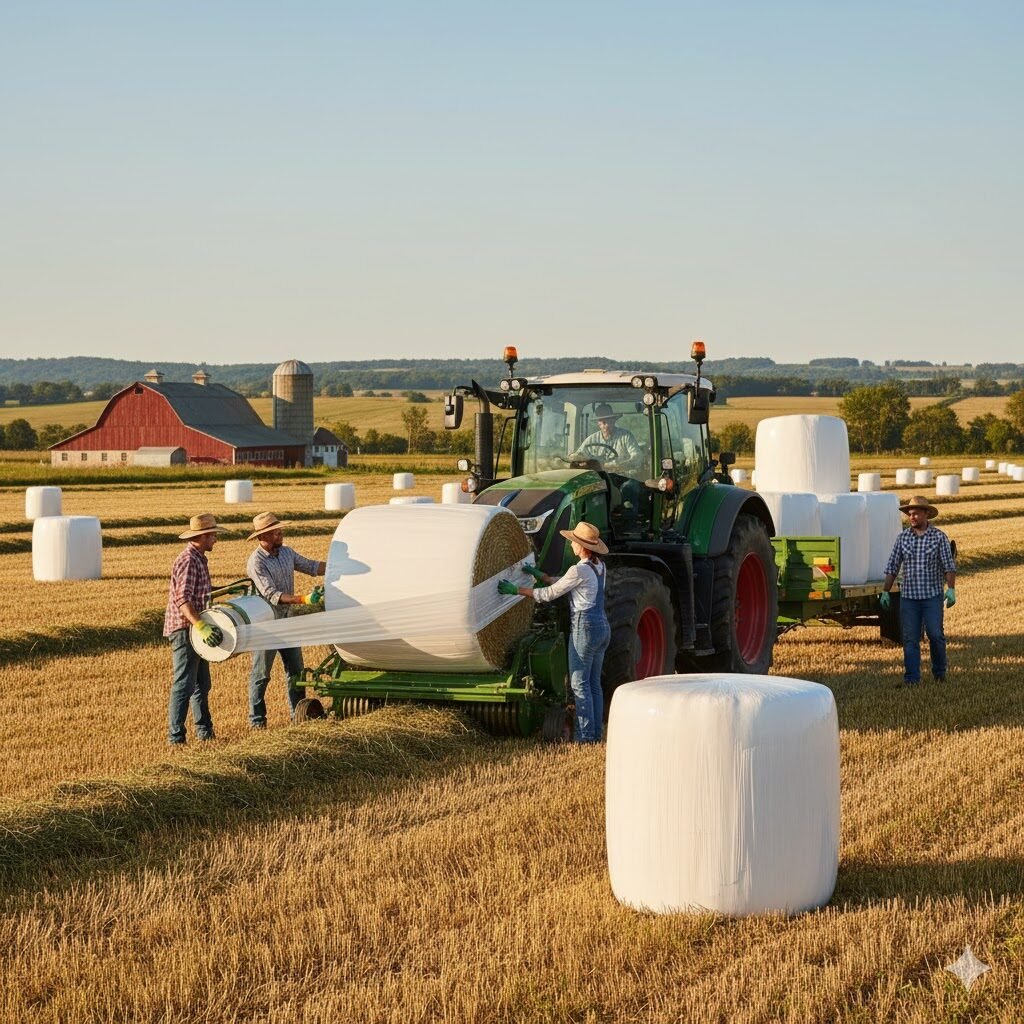
How silage wrap works
Silage wrap works by stretching and snugly adapting to the shapes of your bales to create an airtight, UV-protected film barrier. This barrier stops oxygen from entering the bale, helping to promote anaerobic fermentation. Without an oxygen supply, aerobic bacteria and fungi die off, while beneficial bacteria convert plant sugars into lactic acid. The acid helps to preserve silage by maintaining its nutritional value. The result is a stable, digestible feed.
The number of wrap layers also matters. A 7-layer silage film provides stronger protection than standard wraps. It offers better puncture resistance, especially for rougher crops like alfalfa or straw. Thicker, multi-layer films also withstand wind and UV damage for longer storage periods.
Different types of silage wraps for baling
Did you know that not all silage wraps handle climate and crop conditions similarly? Here are the main types and when to use them.
Airtight silage wrap film
This high-density stretch silage wrap film is designed for round and square bales. For best results, you should apply 6 to 7 layers for consistent sealing and long-term protection. It works well with most baler types.
UV-protect silage wraps
These are silage wraps ideal for regions with strong sunlight, such as Australia and southern Europe. They are built to withstand up to 180 kly UV exposure, keep bales fresh, and prevent nutrient loss. Think of them as sunglasses for your silage.
Eco-friendly bale wraps
These silage wraps use recycled materials and are certified sustainable without compromising strength. They offer an excellent seal and help reduce environmental impact, a growing concern for European farms.
Extra-long silage wraps
These silage wraps are usually made from film that’s 20% longer than standard rolls, reducing downtime during wrapping. Many contain 25% recycled plastic material, offering sustainability with efficiency. They are best for square bales.
All-purpose bale wraps
Versatile and durable, these wraps suit both round and square bales. Their high tear resistance makes them ideal for mixed crop operations or large cooperatives with varying bale conditions.
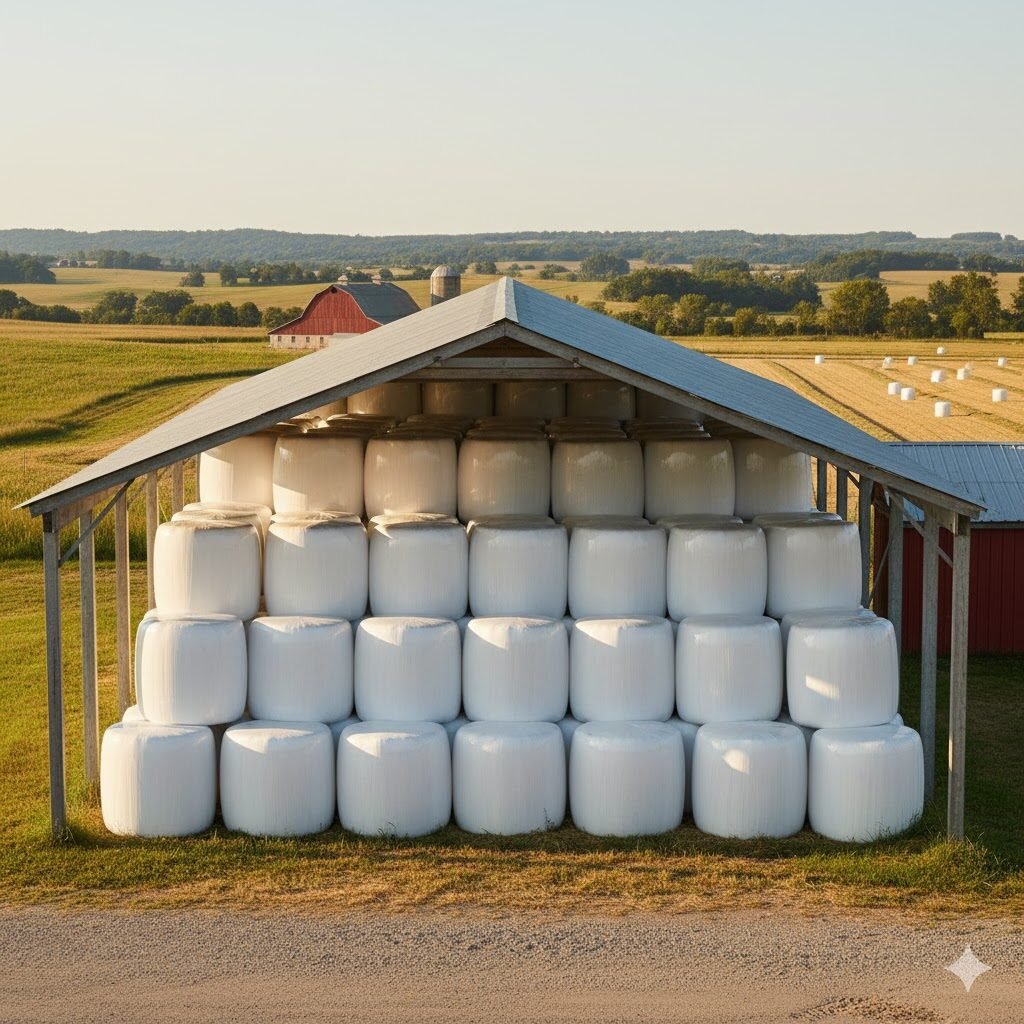
How to select the right silage wrap?
Choosing the right silage wrap is crucial. Different factors affect the silage wrap’s performance and your final feed quality. Here’s what to consider:
- Crop type and moisture level: Crops like alfalfa or clover need stronger, multi-layer films because of their high moisture and sharp stems. Drier grasses can use standard 5- or 6-layer films without risking punctures.
- Climate conditions (UV intensity and rainfall): In sunny regions such as Australia or southern Europe, use wraps with high UV resistance. In wetter climates, choose films with excellent stretch and sealing properties to keep moisture out.
- Storage duration and location (indoor or outdoor): If you are storing outdoors or long-term, go for UV-protected 7-layer silage film. For short-term or indoor storage, a lighter 5-layer film can work well.
- Bale type (round or square): Round bales need stretchier films for even coverage, while square bales require tougher films with higher puncture resistance and tack.
- Wrap thickness and number of layers required: Most farmers apply 6 to 8 layers for airtight sealing. Thicker films or more layers improve protection, especially in rough handling or harsh weather conditions.
Benefits of using silage wrap
Using silage wrap does more than just protect your bales. It safeguards your feed’s quality, reduces waste, and simplifies storage and transport. Here’s why it’s worth the investment:
- Preserves nutrients and quality
Silage wrap locks in protein, sugars, and moisture, creating ideal fermentation conditions. This preserves the feed’s digestibility and keeps it rich in nutrients for livestock.
- Reduces spoilage and waste
An airtight seal prevents oxygen from entering the bale, cutting down mold growth, oxidation, and dry matter loss. Less waste means higher returns for hay sellers.
- Flexible storage and transport
Wrapped silage bales can be stacked, stored outdoors, or moved when needed. They stay sealed and protected, offering flexibility across seasons and storage sites.
- Weatherproof durability
High-quality wraps are UV- and tear-resistant, standing up to heat, rain, and wind. This ensures your bales remain intact and market-ready even in harsh climates.
- Cost-efficient operations
Premium films like 7-layer silage wrap reduce breaks and rewrapping, lowering film use and labor time. The result is better efficiency, consistent wrapping, and stronger profit margins.
How to wrap silage step-by-step
Proper silage wrapping is the key to preserving feed quality and extending bale life. Follow these steps to ensure a tight, airtight seal every time.
Step 1: Prepare evenly shaped, compact bales
Make sure bales are firm, uniform, and well-packed. Loose or uneven bales trap air pockets that interfere with fermentation and increase spoilage.
Step 2: Start wrapping at the middle, overlapping each layer by half
Begin wrapping at the bale’s center and overlap each film layer by about 50%. This overlap ensures even coverage and prevents gaps where air could enter.
Step 3: Maintain steady film tension
Consistent tension keeps the wrap snug and airtight. Too much tension can cause tearing, while too little leaves wrinkles that compromise the seal.
Step 4: Apply 6-8 layers for ideal coverage
Most silage bales need between six and eight layers for full protection. Use more layers if bales will be stored outdoors or handled frequently.
Step 5: Inspect for air leaks or punctures
Once silage wrapping is complete, check each bale for holes or weak spots. Seal any bale damage immediately to maintain airtight conditions and prevent spoilage.
Expert tips for wrapping silage bales
Even with the best silage film, technique matters. These expert tips help you get the most from each roll and ensure your bales stay sealed, nutritious, and ready for market.
#Use net wrap first
Always apply net wrap to your bales before using silage wrap film. The net wrap holds the plant stems tightly, smooths the bale surface, and minimizes punctures during wrapping. For reliable, field-tested performance, choose high-quality options from XES Bale Net. The products include:
a. XES Classic Bale Net Wrap
The XES® Classic Bale Net Wrap is the foundation of reliability. It is built with a 270 kg tensile strength and crafted from eco-friendly HDPE for consistent results in all baling conditions. It is also designed for performance and simplicity. It guarantees smooth operation on every round baler and lasting protection for hay, straw, or silage.
Key features
- Classic strength: Special knitted chain structure with reinforced threads provides high durability and minimizes waste.
- Universal compatibility: Fits all popular round baler brands, including John Deere, New Holland, and Vermeer.
- Guaranteed length: Each roll delivers the full stated length, plus an extra 150 feet for added value and transparency.
- Smart indicators: Side color markings and a red end-of-roll signal improve workflow and reduce downtime.
- Smooth and even winding: Precisely edged and evenly rolled for easy handling and consistent bale coverage.
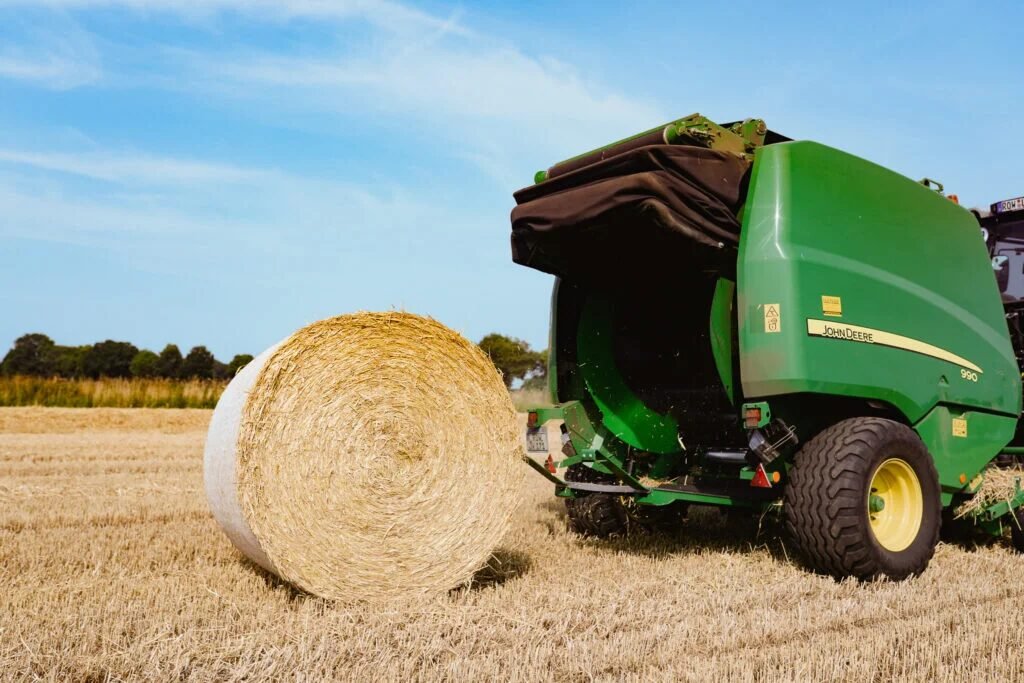
b. XES Extreme Bale Net Wrap
Engineered for tough baling jobs, the XES® Extreme Bale Net Wrap offers premium strength and DLG-certified quality. Its robust knitted chain design and DLG (German Agricultural Society) certification guarantee outstanding reliability, even in demanding farm conditions. It is perfect for silage, hay, maize, and other heavy materials.
Key features
- DLG-certified quality: The Deutsche Landwirtschafts-Gesellschaft has tested and approved this net wrap for strength, consistency, and durability.
- Extreme tensile power: Reinforced structure withstands heavy crops and frequent use, maintaining a tight wrap every time.
- UV-resistant performance: Minimum 12-month UV protection ensures reliable outdoor storage without film degradation.
- Precision design: Side color markings and a red end-of-roll signal make operation smooth and predictable.
- Eco-friendly build: Made from high-density polyethylene (HDPE) to reduce environmental impact without compromising quality.
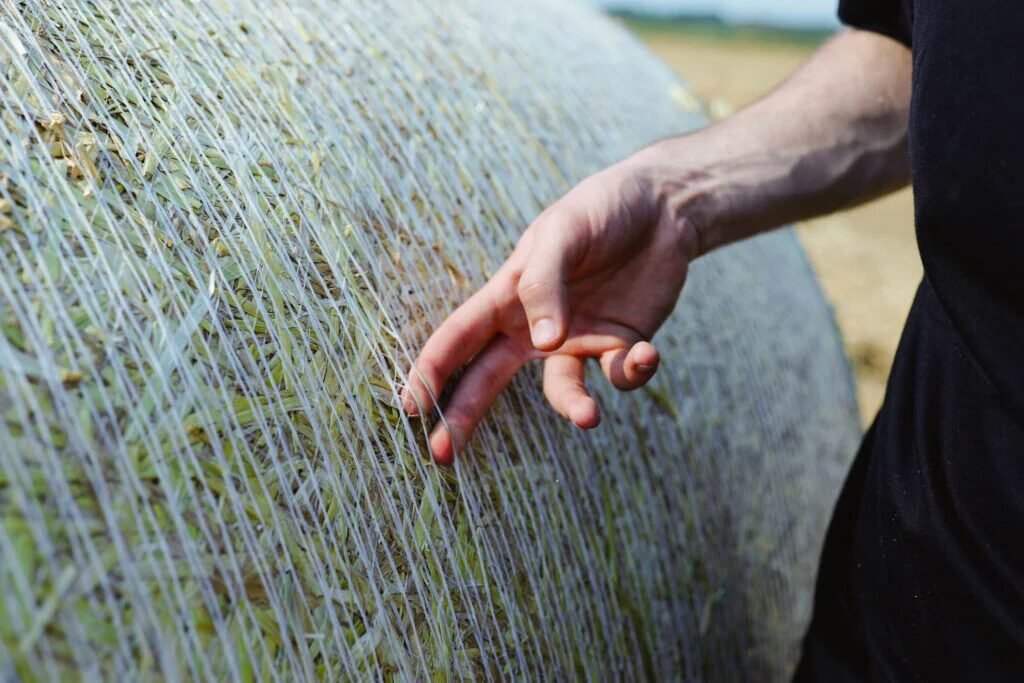
c. XES Supreme Bale Net Wrap
The XES® Supreme Bale Net Wrap represents the latest innovation in agricultural wrapping. Its patented non-woven technology uses one warp thread to connect three weft threads, creating a smooth, flat surface that resists sun exposure and tearing. With a tensile strength up to 300 kg and extended 5,000-meter rolls, it delivers unmatched efficiency and strength.
Key features
- Patented Non-Woven Design: Reduces friction, improves airflow, and prevents damage inside baling machines.
- Exceptional Strength: Handles even the heaviest materials: corn, sugar beet pulp, and strong straw, with up to 300 kg tensile force.
- Extended Roll Length: Up to 5,000 meters per roll for fewer roll changes and improved field productivity.
- Certified Quality: Manufactured under DIN EN ISO 9001 standards for guaranteed precision and reliability.
- UV-Stable and Eco-Friendly: Made from recyclable HDPE with 12-month UV protection for lasting performance in all climates.
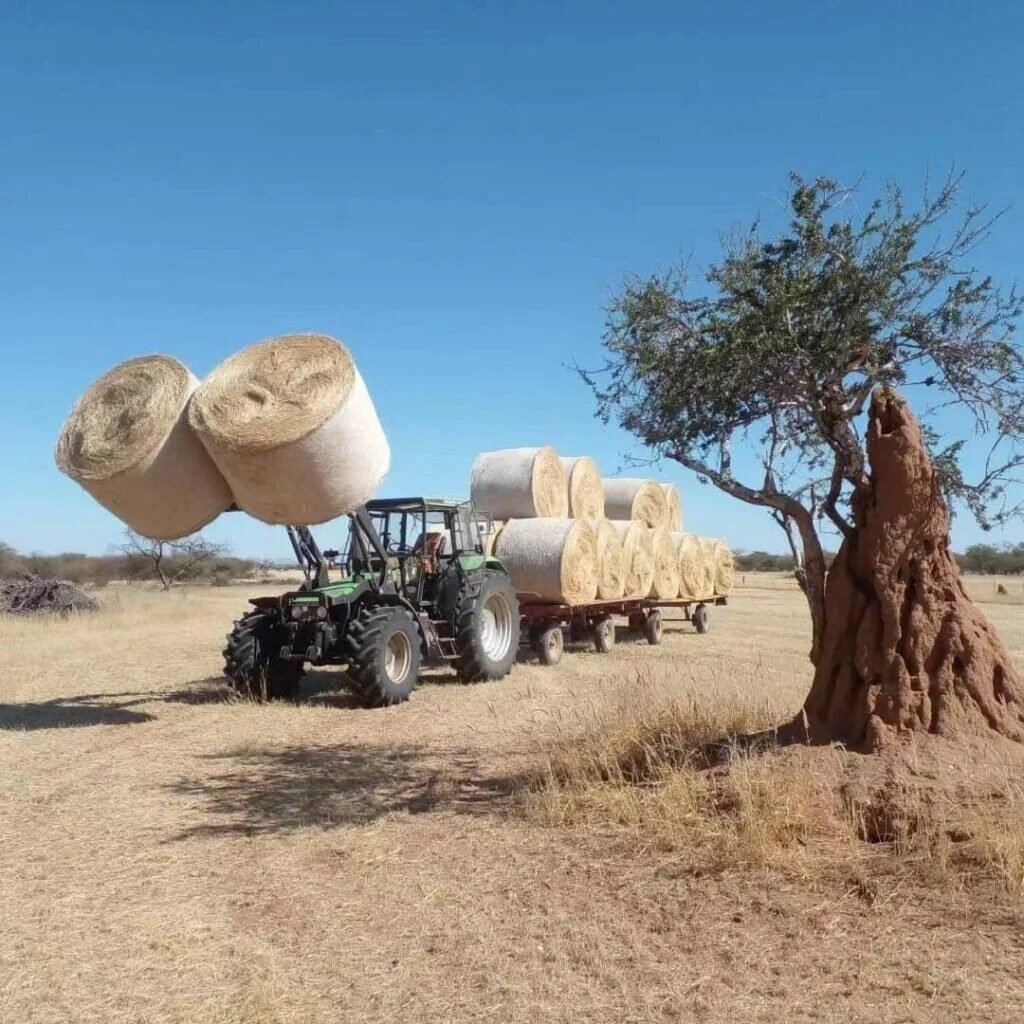
#Wrap within 24 hours
Don’t wait too long after baling. Wrapping within 24 hours limits oxygen exposure, encourages proper fermentation, and prevents spoilage.
#Wrap close to the storage site
Reducing handling after wrapping minimizes the risk of tearing or puncturing the film. If you must move bales, wait at least 24 hours to allow the fermentation gases to stabilize.
#Use proper film rotation
Apply 6-8 rotations around each bale, depending on the film’s strength and your climate. More layers offer better protection in windy or high-UV conditions.
#Store on gravel or drained ground
Place wrapped bales on clean, drained surfaces like gravel. This prevents standing water, limits pest damage, and helps maintain a clean, long-lasting seal.
Common silage wrapping mistakes to avoid
Even experienced farmers can lose silage quality from simple wrapping errors. Avoiding these common mistakes ensures your bales stay airtight and well-preserved.
Wrapping too late after baling
Delaying wrapping exposes bales to oxygen, which triggers heat buildup and spoilage. Always wrap within 24 hours for the best fermentation results.
Using damaged or expired film
Old or torn film weakens the seal and invites air leaks. Check your wrap’s expiry date and inspect for damage before use.
Skipping net wrap
Skipping the net wrap makes bales uneven and prone to punctures. A proper net layer keeps stems contained and provides a smooth surface for the film.
Storing on wet soil or grass
Wet or soft ground can damage the film and allow mold growth. Store bales on dry, well-drained ground or gravel to extend their lifespan.
Insufficient film layers
Using fewer than six layers increases oxygen exposure and risks spoilage. Apply at least six to eight layers for reliable protection.
Poor maintenance of wrapping equipment
Worn rollers, dirty sensors, or uneven tension can ruin your wrap. Regularly clean and service your wrapper to maintain consistent performance.
FAQ
- Are silage and hay the same thing?
No, silage and hay are not the same. Silage is fermented, high-moisture forage stored in airtight conditions, while hay is dried grass preserved through dehydration. Silage provides higher energy and nutritional value, especially during dry seasons. To keep your silage fresh and nutrient-rich, use XES Bale Net together with high-quality silage wrap film for secure, airtight protection.
The cost varies depending on location, equipment, labor, and materials. On average, it ranges between $8 and $15 per bale. Using quality net wrap and silage film reduces waste and spoilage, helping you save in the long run. XES products offer reliable performance and cost-efficiency across different farm sizes.
- What’s the importance of UV protection in silage wrap?
UV protection prevents film degradation from sunlight exposure, which can cause cracks and air leaks. A UV-stable wrap keeps the bale sealed and the feed fresh for longer. In addition, you can use XES net wraps together with UV-resistant film wraps. This combo ensures strong protection even in harsh sunlight.
- Are there recycling options for used silage wraps?
Yes, most silage films can be recycled if they are clean, not damaged, and appropriately sorted. Many recycling centers and farm programs now collect agricultural plastics. You can always check them out. However, new silage wraps are recommended if possible. To ensure your silage wraps stay in shape for long, incorporate XES net wraps before applying the silage film. XES supports sustainability through eco-friendly HDPE products designed for easy recycling and reduced environmental impact.
- What distinguishes a 7-layer silage film from other films?
A 7-layer silage film offers greater strength, stretchability, and airtightness than thinner films. It resists tears and punctures more effectively, providing better fermentation results. Multi-layer silage wraps are engineered to deliver consistent sealing performance and long-term feed quality. For better handling of your silage, ensure you use net wraps first. The best net wraps are available at xesbalenet.com.
- Why is silage stretch film recommended for wrapping round bales?
Silage stretch film ensures a tight, oxygen-free seal around round bales, which promotes proper fermentation and minimizes spoilage. The film stretches uniformly to cover every surface. With XES net wraps, your silage bales achieve excellent cling and elasticity for smooth wrapping and durable results.
- How does baled silage benefit you?
Baled silage saves storage space, reduces waste, and provides consistent feed quality year-round. It also lowers labor costs and allows flexible feeding schedules. If you want longer-lasting baled silage, first wrap them with bale net wraps. Using XES Bale Net and Silage Film helps maintain these benefits by protecting each bale from air and moisture damage.
- How does the quality of the silage wrap affect the feed?
High-quality wrap creates a tighter seal, preventing oxygen from reaching the bale. This preserves nutrients and improves feed taste and digestibility. Use XES silage bale net wrap designed for superior seal strength and durability to ensure your feed retains maximum nutritional value.
- Why are there different films for round and square bales?
Round and square bales differ in shape and density, which affects how the film stretches and seals. Round bales need stretchier films, while square bales require tougher films for sharp edges. To ensure your bales stay in shape without losing feed, ensure you wrap them with XES net wraps. XES offers a range of net wraps optimized for both bale types to guarantee the best protection.
- How long does wrapped silage last?
Properly wrapped silage can last up to 12 to 18 months without losing quality, depending on storage and handling. Consistent sealing and UV protection are key. Moreover, using XES bale net wraps provides durable, long-lasting protection. It keeps the bale contents together to keep your feed fresh through every season and minimize waste.
Conclusion
The above article clearly demonstrates that proper silage wrapping is key to preserving feed quality, reducing waste, and saving costs. Every step, from baling to sealing, affects your harvest’s value. We recommend choosing reliable silage wrapping materials and using XES net wraps to ensure your efforts pay off. Combining silage wrap solutions with XES bale net wrap products offers maximum performance: proven durability, UV protection, and airtight sealing. So, choose XES products to protect your investment and secure quality feeds with more efficient silage management.

